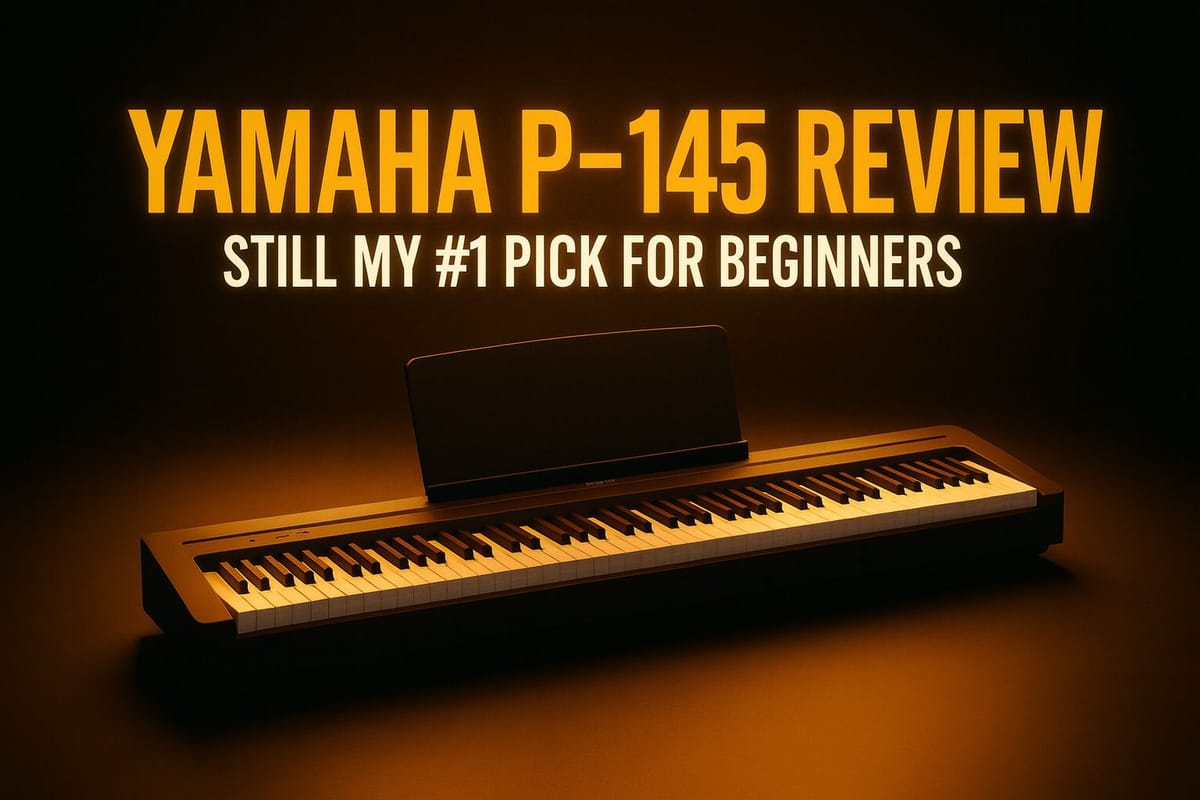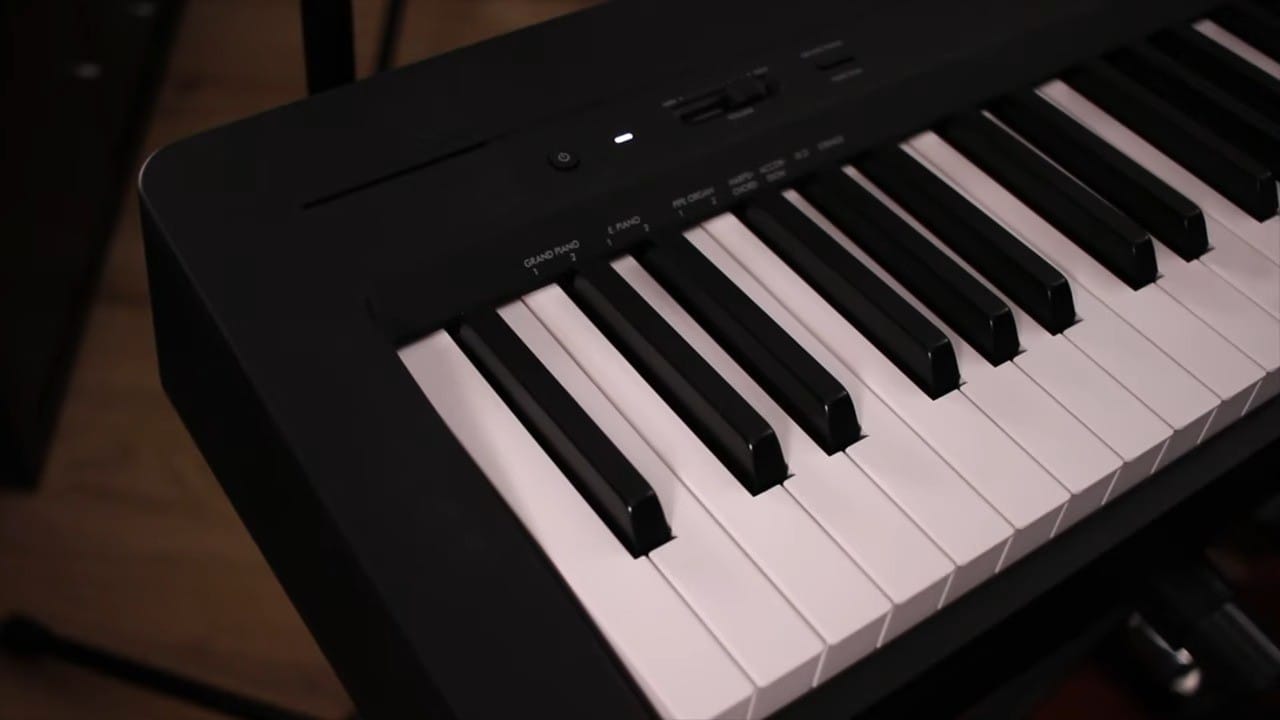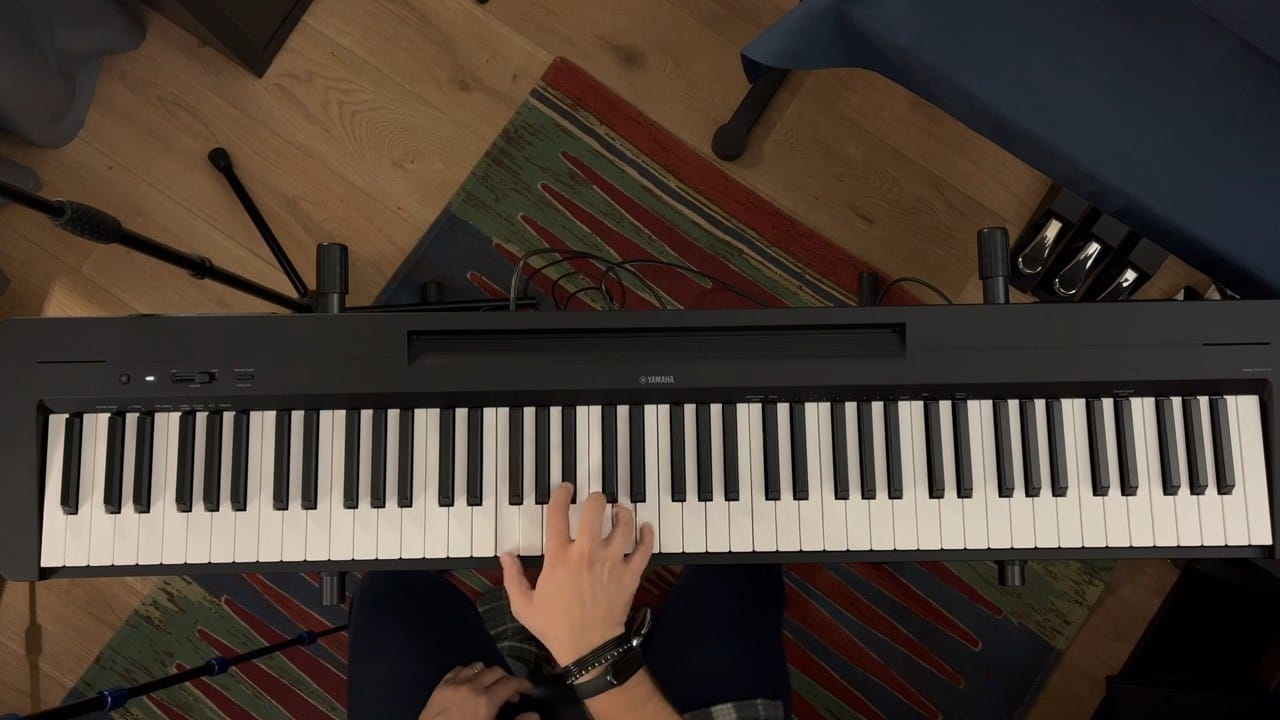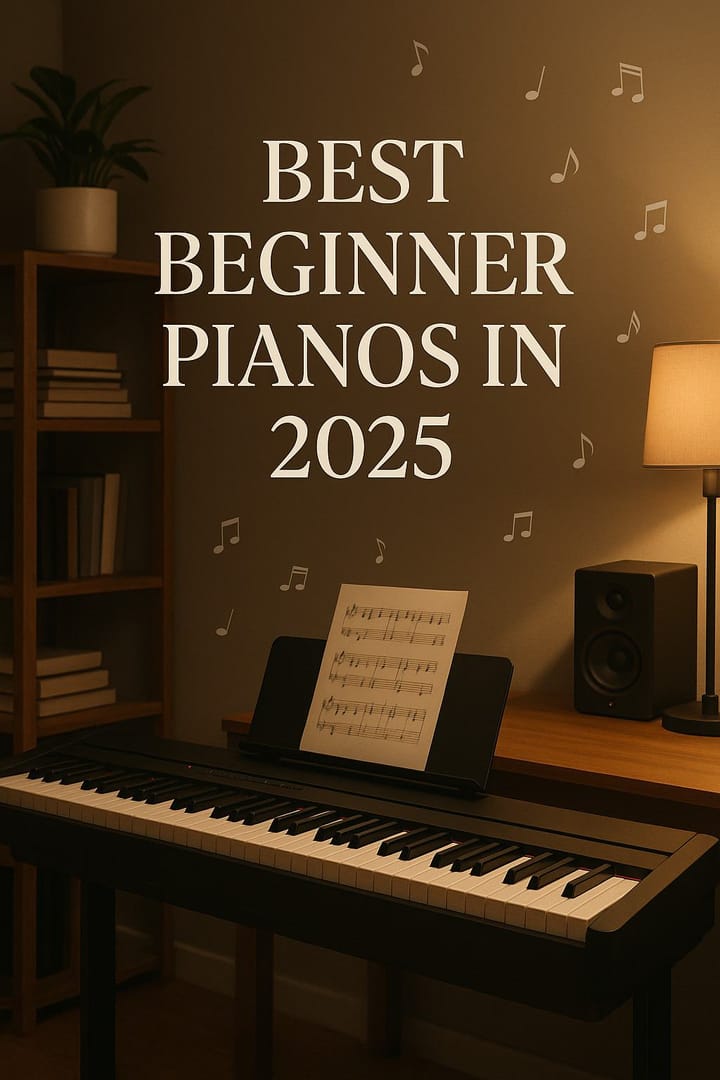Yamaha P-145 / P-145BT Review in 2025: Still My #1 Pick for Beginners

If you're starting piano right now and want something that actually feels good, sounds legit, and won't make you quit in three months… the Yamaha P-145 (or its new Bluetooth sibling, the P-145BT) is still sitting at the absolute top of my beginner recommendations in 2025.
I’ve had the original P-145 since launch, hammered on it almost daily, lent it to students, moved it around apartments like it’s a laptop… and then Yamaha dropped the P-145BT this year with the one upgrade everyone begged for. So yeah, I bought that one too. Spoiler: everything I’m about to say applies to both unless I call it out.
The 2025 Version: P-145 vs P-145BT – What Actually Changed?

Short answer: almost nothing except the feature that matters most to 90% of beginners.
| Model | Bluetooth Audio + MIDI | Everything Else | Street Price (Nov 2025) |
|---|---|---|---|
| P-145 | No (USB cable only) | Identical | $450–$520 |
| P-145BT (new) | YES – wireless everything | Identical | $499–$570 (often on sale/cashback) |
That’s literally it. Same keys, same sound, same speakers, same weight. The BT version just lets you stream Spotify/YouTube/lessons straight through the piano’s speakers and control the Smart Pianist app wirelessly. No more hunting for the stupid USB cable. If you’re buying new today → just get the P-145BT and thank me later.
Why It Still Feels Like a “Real” Piano From the First Note
Sit down and play one chord. Done. You’re sold.
The Graded Hammer Compact (GHC) action is quieter than the old P-125/P-45, lighter than Roland/Casio competitors, but still properly graded (heavy in the bass, lighter up top). Fast repeats? Smooth and silent. No cheap clacking. I can practice at 1 a.m. without waking anyone, and it still teaches correct finger technique. Students who switch to an acoustic upright later barely notice the difference.

Sound comes from Yamaha’s CFIIIS concert grand sample; bright, punchy, super clean. Not the absolute richest tone on the planet (Roland wins there), but easily the most “motivating” for beginners. Through headphones it’s stunning. Through the built-in 2x7W speakers it’s loud and clear enough for a bedroom or small apartment, way better than the downward-firing Rolands that get muffled on a desk.
What You Actually Get
- 88 fully weighted GHC keys (quieter, smoother, lighter than most at this price)
- 64-note polyphony (plenty until you’re playing advanced Liszt)
- Pure CFIIIS grand piano sound + 9 other usable voices
- Damper resonance, key-off samples, half-pedal support
- USB audio/MIDI interface (record straight into GarageBand/FL Studio zero latency)
- Smart Pianist app (Bluetooth on the BT model: life-changing)
- Battery power option (6 AA batteries - yes really)
- Triple pedal add-on compatible (LP-5A)
- Weighs ~25 lbs / 11.5 kg: stupidly portable
- P-145BT only: Bluetooth audio + MIDI (play along wirelessly)
Best For (Who Actually Loves This Thing)
- Total beginners who want forgiving, quiet keys
- Adults returning to piano (no childish lights or 600 sounds)
- Tiny apartments / dorms / frequent movers
- Anyone who practices mostly with headphones or wants to jam over YouTube beats (P-145BT shines here)
The Few Real Downsides (2025 Edition)
- Speakers are good, not amazing. Fine unplugged, but you’ll eventually want headphones or external speakers for bigger rooms.
- 64-note polyphony is still the same; beginners never hit the limit, but heavy sustain-pedal classical players might years down the line.
- Original P-145 still needs a cable for app/backing tracks (P-145BT fixes this completely).
My Honest Take After Two Years (and Owning Both Versions)
I’ve recommended the P-series to dozens of friends and students. Zero regrets. Zero returns. People text me months later saying they’re addicted.
The P-145 was already the safe, no-drama king of beginner digital pianos.
The P-145BT just removed the last tiny annoyance and made it basically perfect under $600.
Demo of Yamaha P-145 (How it sounds)
If you find a screaming deal on the non-BT version under $480 → still buy it.
Otherwise? Spend the extra $40–60 and get the P-145BT. You’ll use that Bluetooth every single day.
Pair it with a good stand, bench, some closed-back headphones, and you’re set for the next 5–10 years easy. Way better than wasting money on a flashy 61-key toy you’ll outgrow in six months.
Just get it. Then actually practice. That’s the part that matters way more than the gear.
Still on the fence? Drop your budget, room size, or what you’re scared of in the comments and I’ll tell you straight if this is the one (or if something else snuck ahead while I wasn’t looking).
Yamaha P-145 vs P-45
I owned and taught on the P-45 for years. Here’s the real difference now that P-45 stock is still floating around at ~$399–$450:
Quick Comparison
Key Action
P-145 / BT: GHC – quieter, smoother, lighter
P-45: GHS – classic but clackier
Winner: P-145
Key Noise
P-145 / BT: Almost silent on fast repeats
P-45: Noticeable thock-thock
Winner: P-145
Sound
P-145 / BT: Newer CFIIIS – brighter, richer
P-45: Older AWM – still great but flat
Winner: P-145
Speakers
P-145 / BT: 2×7W (clearer)
P-45: 2×6W
Winner: P-145
Connectivity
P-145 / BT: USB audio + Smart Pianist (BT adds wireless)
P-45: USB only
Winner: P-145BT
Size
P-145 / BT: Slimmer (12.9" deep)
P-45: Slightly deeper
Winner: P-145
Price
P-145 / BT: $500–$579
P-45: $399–$450 (leftover stock)
Winner: P-45
Bottom line
- If you find a new P-45 under $420 → buy it. Still fantastic.
- If the gap is $50 or less → get the P-145BT. Quieter keys + Bluetooth audio are 100% worth it in 2025.
I sold my P-45 the week the P-145 arrived. Enough said.
FAQ – Yamaha P-145 & P-145BT
Is the Yamaha P-145 / P-145BT good for complete beginners?
Yes. Hands down one of the best pianos for beginners you can buy right now. The keys are quiet, forgiving, and teach proper technique without fighting you. I’ve put total newbies on it and they’re still practicing months later instead of quitting.
What’s the difference between the P-145 and P-145BT?
Only Bluetooth audio + MIDI. Everything else: keys, sound, speakers, weight, is 100% identical. The BT version lets you stream backing tracks or YouTube lessons wirelessly through the piano speakers and control the app without a cable. If you’re buying new, just spend the extra $40-60 and get the P-145BT.
Is the Yamaha P-145BT the best digital piano under $600 in 2025?
For most beginners and budget-conscious adults; yes, still my #1. The Roland FP-10/FP-E50 are close (sometimes cheaper), but the lighter/quieter Yamaha action + Bluetooth audio edges it out unless you specifically want a heavier “acoustic” feel.
Is the Yamaha P-145 still worth buying or is it discontinued?
Not discontinued, but the non-BT version is getting harder to find new. Stock is drying up and prices are all over the place. Grab the P-145BT instead, same piano, zero regrets.
Does the P-145 / P-145BT have weighted keys?
Yes, 88 fully weighted, graded hammer action (heavier in the bass, lighter in the treble) with the newer GHC mechanism. Feels way closer to a real piano than any “semi-weighted” or springy keyboard nonsense.


Comments ()